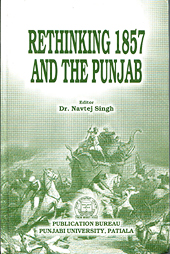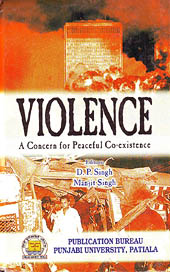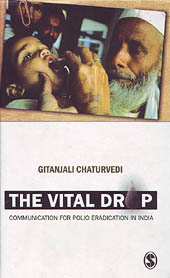|
SHORT TAKES
History revisited
Randeep Wadehra
Rethinking 1857 and the Punjab
Ed. Dr. Navtej Singh. Punjabi University.
Pages: xxiv+267. Rs 280.
 Revisiting
historical events is a part of the academic discourse so essential for
the nation-building process - provided such explications stick to
historiography's basic tenets, viz., objectivity and truth. Although, in
the name of national interest, political expediencies have caused
rewriting of histories the world over any digression from the basic
principles has done more harm than good. Nonetheless, debates on
accepted history are essential in order to validate or redefine
significant events. Revisiting
historical events is a part of the academic discourse so essential for
the nation-building process - provided such explications stick to
historiography's basic tenets, viz., objectivity and truth. Although, in
the name of national interest, political expediencies have caused
rewriting of histories the world over any digression from the basic
principles has done more harm than good. Nonetheless, debates on
accepted history are essential in order to validate or redefine
significant events.
When, in 1957, the so
called Sepoy Mutiny was officially anointed as India's First War of
Independence the powers that be failed to anticipate the division of the
nascent polity into patriotic and anti-national slots. Sikhs, nay
Punjabis, who were the last to fall to the inexorably expanding British
power, after the Second Anglo-Sikh War in 1849, are justifiably incensed
at finding themselves in the unpatriotic slot just because they were
either on the wrong side or neutral in 1857 when pan-Indianism was not
in vogue. The various essays in this volume interrogate this aspect.
Nonetheless, certain questions need to be answered, viz., when did the
'India-is-one-nation' sentiment take birth? Need we always look at
yesterday through today's prism? There cannot be a simple explanation,
but there is certainly a need for objectivity based consensus among
historians.
 Violence: A Concern
For Peaceful Co-existence Violence: A Concern
For Peaceful Co-existence
Ed D.P Singh and Manjit Singh. Punjabi University.
Pages: xix+283. Rs 300.
Violence is ubiquitous.
It could be in the form of protest, retaliation, injustice or
repression; as an instrument for the furtherance of a nation's hegemony
or protection of its sovereignty; and for the assertion of state control
or meeting insurgency related challenges. Domestic violence, road rage
and myriad other situations are also different dimensions of this
phenomenon.
One essay in this
volume points out the symbiotic relationship between development and
violence, and goes on to dwell upon ethnic/communal conflicts and wars
between nations even as it examines the existence of violence in
interpersonal relationships. Other essays in this volume investigate
terrorism-related violence, cyber crimes, religious fundamentalism, and
relevance of Buddha's teachings. Some contributors to this volume look
into crimes against women and children and domestic violence while one
writer explores the relationship between destructive/cruel actions of
adults and their traumatic experiences during childhood.
The Vital Drop:
Communication For Polio Eradication In India
by Gitanjali Chaturvedi. Sage.
Pages: xviii+319. Rs 750.
 India's demographic,
economic and geographic complexities pose daunting challenges to mass
disease eradication campaigns as evidenced by the drive against polio,
which is arguably the biggest of its kind in the world. Various agencies
and institutions with variegated competencies have been involved in
order to reach out to India's "large, diverse, segregated and
mobile populations" not to mention the marginalised ones. All this
requires deployment of well thought out and innovative means of
communication and sophisticated surveillance systems. The author points
out, "Democracy accords citizens the luxury of choice, which they
often exercise by saying no." She further states that doubts about
actual intention behind eradication arise when people's minds are unable
to rationalise the logic behind multiple rounds of administering polio
drops. Thus, challenges posed to effective communication have been:
Creating awareness that polio is preventable by the regular
administration of drops to children below five years of age; to convince
families that polio drops are essential for preventing permanent
disability and, therefore, they must ensure that their children are
adequately protected; and to ensure continued compliance by families,
round after round. India's demographic,
economic and geographic complexities pose daunting challenges to mass
disease eradication campaigns as evidenced by the drive against polio,
which is arguably the biggest of its kind in the world. Various agencies
and institutions with variegated competencies have been involved in
order to reach out to India's "large, diverse, segregated and
mobile populations" not to mention the marginalised ones. All this
requires deployment of well thought out and innovative means of
communication and sophisticated surveillance systems. The author points
out, "Democracy accords citizens the luxury of choice, which they
often exercise by saying no." She further states that doubts about
actual intention behind eradication arise when people's minds are unable
to rationalise the logic behind multiple rounds of administering polio
drops. Thus, challenges posed to effective communication have been:
Creating awareness that polio is preventable by the regular
administration of drops to children below five years of age; to convince
families that polio drops are essential for preventing permanent
disability and, therefore, they must ensure that their children are
adequately protected; and to ensure continued compliance by families,
round after round.
This book tells us how
these challenges have been met.
|